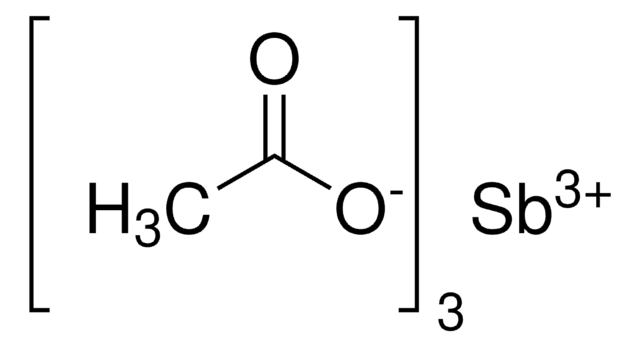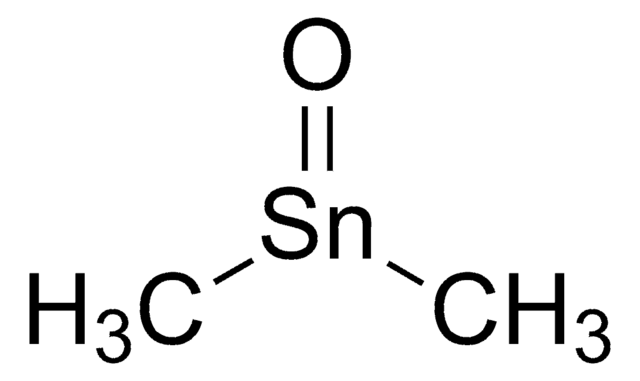If this product has an expiration or retest date, it will be shown on the Certificate of Analysis (COA, CofA). If there is no retest or expiration date listed on the product's COA, we do not have suitable stability data to determine a shelf life. For these products, the only date on the COA will be the release date; a retest, expiration, or use-by-date will not be displayed.
For all products, we recommend handling per defined conditions as printed in our product literature and website product descriptions. We recommend that products should be routinely inspected by customers to ensure they perform as expected.
For products without retest or expiration dates, our standard warranty of 1 year from the date of shipment is applicable.
For more information, please refer to the Product Dating Information document: https://www.sigmaaldrich.com/deepweb/assets/sigmaaldrich/marketing/global/documents/449/386/product-dating-information-mk.pdf
345164
Tin(II) acetate
Synonym(s):
Stannous acetate, Tin acetate, Tin diacetate
About This Item
Recommended Products
form
solid
Quality Level
reaction suitability
core: tin
reagent type: catalyst
mp
180-182 °C (lit.)
SMILES string
CC(=O)O[SnH2]OC(C)=O
InChI
1S/2C2H4O2.Sn/c2*1-2(3)4;/h2*1H3,(H,3,4);/q;;+2/p-2
InChI key
PNOXNTGLSKTMQO-UHFFFAOYSA-L
Related Categories
General description
Application
- Enhances the rate of thermal depolymerization of poly(lactic acid) fibers
- Reactant for the synthesis of Sn-Cu bimetallic nanoparticles
- used in in preparation of tin anode by organic electroplating for rechargeable thin-film batteries
- Used as tin source for preparation of high surface area tin oxide catalysts
Signal Word
Warning
Hazard Statements
Precautionary Statements
Hazard Classifications
Acute Tox. 4 Dermal - Acute Tox. 4 Inhalation - Acute Tox. 4 Oral
Storage Class Code
6.1C - Combustible acute toxic Cat.3 / toxic compounds or compounds which causing chronic effects
WGK
WGK 3
Flash Point(F)
Not applicable
Flash Point(C)
Not applicable
Personal Protective Equipment
Choose from one of the most recent versions:
Already Own This Product?
Find documentation for the products that you have recently purchased in the Document Library.
Customers Also Viewed
-
How can I determine the shelf life / expiration / retest date of this product?
1 answer-
Helpful?
-
-
How is shipping temperature determined? And how is it related to the product storage temperature?
1 answer-
Products may be shipped at a different temperature than the recommended long-term storage temperature. If the product quality is sensitive to short-term exposure to conditions other than the recommended long-term storage, it will be shipped on wet or dry-ice. If the product quality is NOT affected by short-term exposure to conditions other than the recommended long-term storage, it will be shipped at ambient temperature. As shipping routes are configured for minimum transit times, shipping at ambient temperature helps control shipping costs for our customers. For more information, please refer to the Storage and Transport Conditions document: https://www.sigmaaldrich.com/deepweb/assets/sigmaaldrich/marketing/global/documents/316/622/storage-transport-conditions-mk.pdf
Helpful?
-
-
what is the purity percentage?
1 answer-
The purity of this product is not determined. The Tin(II) content is tested on lot-specific bases with a specification of 49 - 53%.
Helpful?
-
Active Filters
Our team of scientists has experience in all areas of research including Life Science, Material Science, Chemical Synthesis, Chromatography, Analytical and many others.
Contact Technical Service












